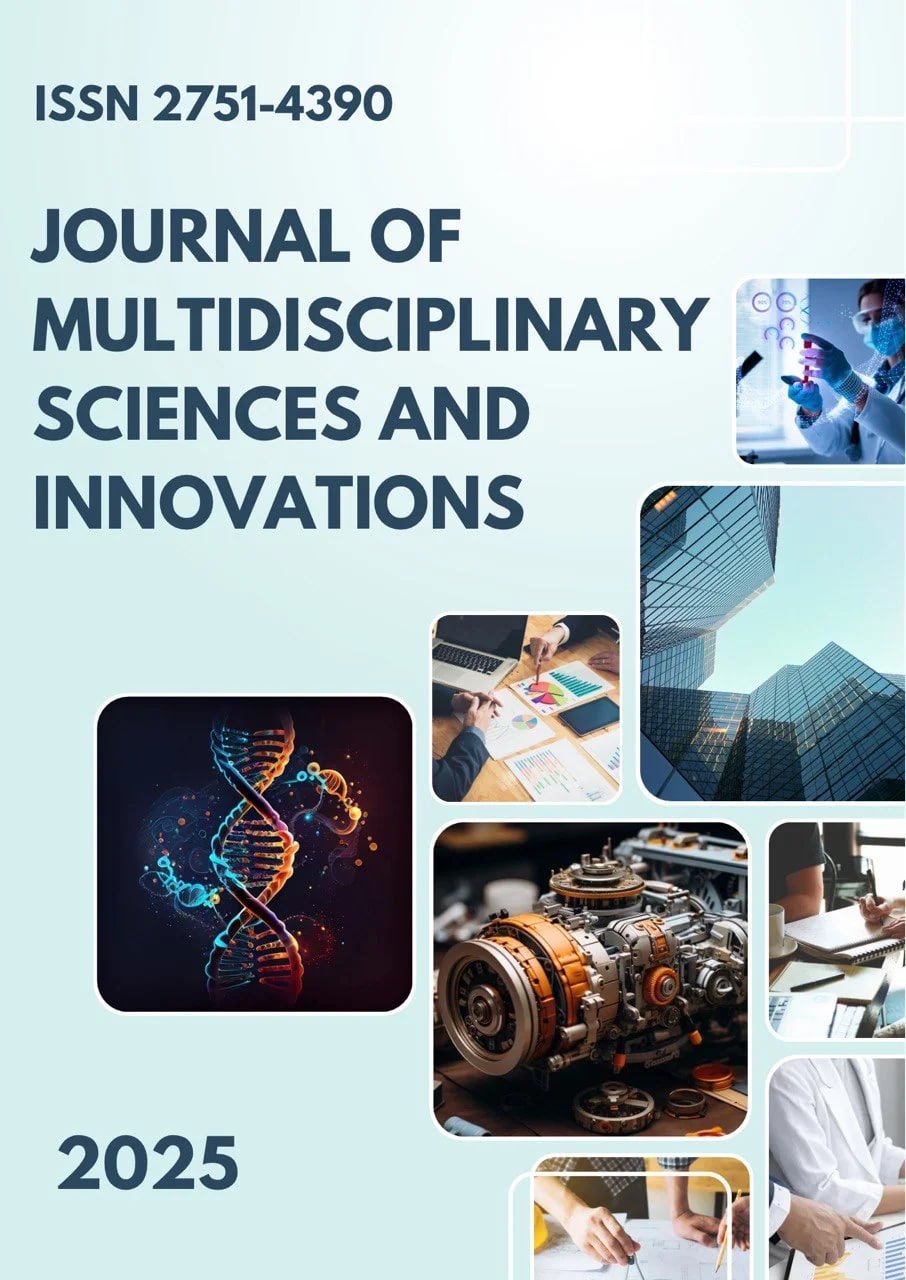WASTEWATER TREATMENT WITH SORBENTS MADE OF MODIFIED VERMICULITE AND ORGAN VERMICULITE
Main Article Content
Abstract
The article investigates the modified Vermiculite with chitosan and adsorption capacity of organ sorbent based on.
This paper investigates the efficiency of wastewater treatment using sorbents based on modified vermiculite and organ vermiculite. Vermiculite, a layered aluminosilicate with high cation exchange capacity and thermal stability, was chemically and thermally modified to enhance its adsorption properties. Additionally, surface modification with organic compounds was applied to obtain organ vermiculite with increased affinity for organic pollutants. The sorption capacity of both materials was evaluated for removing heavy metals (such as Pb²⁺, Cu²⁺, and Zn²⁺) and organic contaminants (such as phenols and dyes) from industrial and domestic wastewater. Experimental results demonstrated that organ vermiculite exhibited higher sorption efficiency toward organic pollutants, while thermally modified vermiculite was more effective in capturing heavy metal ions. The study confirms the potential of using natural and modified vermiculite-based sorbents as cost-effective and environmentally friendly materials for advanced wastewater treatment applications.
Downloads
Article Details
Section

This work is licensed under a Creative Commons Attribution 4.0 International License.
Authors retain the copyright of their manuscripts, and all Open Access articles are disseminated under the terms of the Creative Commons Attribution License 4.0 (CC-BY), which licenses unrestricted use, distribution, and reproduction in any medium, provided that the original work is appropriately cited. The use of general descriptive names, trade names, trademarks, and so forth in this publication, even if not specifically identified, does not imply that these names are not protected by the relevant laws and regulations.
How to Cite
References
1. Khalchenko I. G. , Shapkin N. P. , Svistunova I. V. , Tokar E. A. , Chemical modification of vermiculite and research its physical and chemical properties “International Scientific Forum Butlerov Heritage – 2015”. http://foundation.butlerov.com/bh-2015/
2. Marchenko L. A. Study of the possibility of sorption purification in the elimination of oil pollution / L. A. Marchenko, E. A. Belogolov, A. A. Marchenko, O. N. Bugayets, T. N. Bokovikova // Scientific journal Kub GAU. 2012. No. 84 (10). P. 23-32.
3. Hu, Q., Xu, Z., Qiao, S., Haghseresht , F., Wilson, M., and Lu, G.Q., (2007), A novel color removal adsorbent from hetero coagulation of cationic and anionic clays. Journal of colloid and interface science, 308, pp. 191-199.
4. Ikhtiyarova GA, Hazratova DA, Umarov BN, Seytnazarova OM Extraction of chitozan from died honey bee A pis mellifera // International scientific and technical journal Chemical technology control and management. -Vol. 2020:Iss.2, -№3.- pp.15-20 .
5. Umarov BN, Aliyeva MT, Ikhtiyarova GA, Turobdjonov SM The use vermiculit and chitosan based serbintes in cleansing wastewater Tabi i y fanlar soҳas and dagi dol z arb m u a m m o lar va innovation and on technologylar»mavzusidagi halkaro ilmiy-amaliy on-line anzhumani. Tashkent. 2020 November 80-82b.
6. Ikhtiyarova GA, Ozcan AA, Ozcan AS Characterization of natural- and organobentonite by XRD, SEM, FT-IR and thermal analysis techniques and its adsorption behavior in aqueous solutions // Journal Clay Minerals, V.47, 2012 y. pp.31-44 .
7. Ikhtiyarova G.A. , Umarov B.N. , Isomitdinova D.S. , Turobzhanov S.M. Treatment of wastewater from a textile enterprise with composites based on vermiculite and modified chitosan. Journal of Composite Materials. - No. 4. - 2021, - P. 116-118.
8. Ikhtiyarova GA, Umarov BN, Turabdjanov SM Treatment of textile wastewater with vermiculite modified with chitosan. // International Journal of innovative research. -V 9. Issue 9., -2021. pp.9780-9786.

